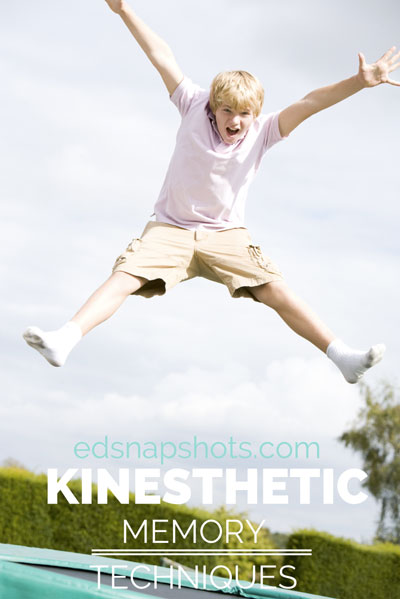

- Help Your Kids Memorize Anything
- Recite, Recite, Recite
- Sing Me A Song
- Memory Work for Visual Learners
Kids just need to move. They like to wiggle, get up and dance and jump about the room. For some, movement helps them learn and retain information. Let’s look at two ways we can use movement to help kids remember.
Kinesthetic Memory Techniques
One activity that really helps with recall is putting motions to the words of a piece of memory work. We might take a history sentence or piece of poetry and choose a motion to help us remember the most important words. Here are a few examples from our memory work sentence this week:
- Renaissance – painting motion as if painting on a canvas
- Time – put hands out like a clock
- Intense – act as if engrossed in a book (use two hands)in front of your face.
- Ideas – tap temple
- Art – paintbrush again
- Writings – act as if writing using finger on opposite hand
- Greece – rub hands together quickly as if they are greased and slide past each other easily
- Rome – ASL “r”
Together the sentence reads:
The Renaissance, which lasted from about 1300 AD to about 1600 AD, was a time of intense interest in the ideas, art, and writings of ancient Greece and Rome.
I always have the kids help me come up with the motion ideas in our co-op class. This gives them ownership of the motions and makes sure we choose things that are relevant to them. Sometimes I come up with analogies I think they have context for, but they do not. Instead I get a bunch of confused faces staring at me. This is why it is important to include them in the process.
As we learn the motions and memory work we repeat often. We will determine the motions for a phrase and then repeat each phrase multiple times as we add the subsequent ones.
Give a Cheer
Another way we do this is by creating a cheer for the memory work. These simple cheers have been some of the kids’ favorite things from this year. Based on the same principle as above, we do a little clapping and chanting of the memory work question and then create a motion “hook” for each piece of memory work. So if you are learning about the great circles of the earth you might use:
Antarctic Circle – use fingers to simulate ants crawling up opposite arm
Tropic of Capricorn – indicate a unicorn horn with hand
Equator – make equal sign with arm
Tropic of Cancer – make crab pincers
Arctic Circle – make a boat with hands (it’s an ark — get it?)
Prime Meridian – we take a big step to the side for this one, indicating that it runs the opposite direction than the rest of them
Here is a video to help you visualize it:
I am amazed at how much I remember myself using this method — things I never dreamed I would know, and now I just love having all this context floating around in my brain!
So how about you? Do you have any special kinesthetic memory techniques for helping your wiggly learners?
- Homeschooling Boys with Durenda Wilson - April 12, 2024
- What About Lab Sciences? with Dr. Moon - March 29, 2024
- Can I Teach Everything My High Schooler Needs to Know? - March 15, 2024
